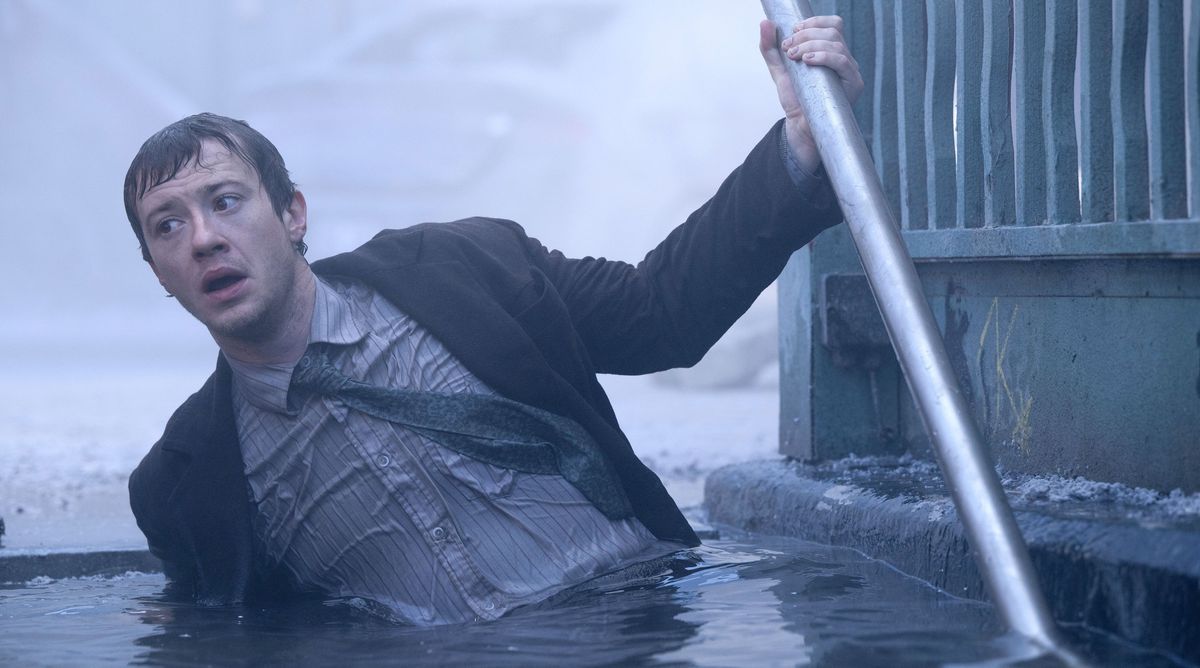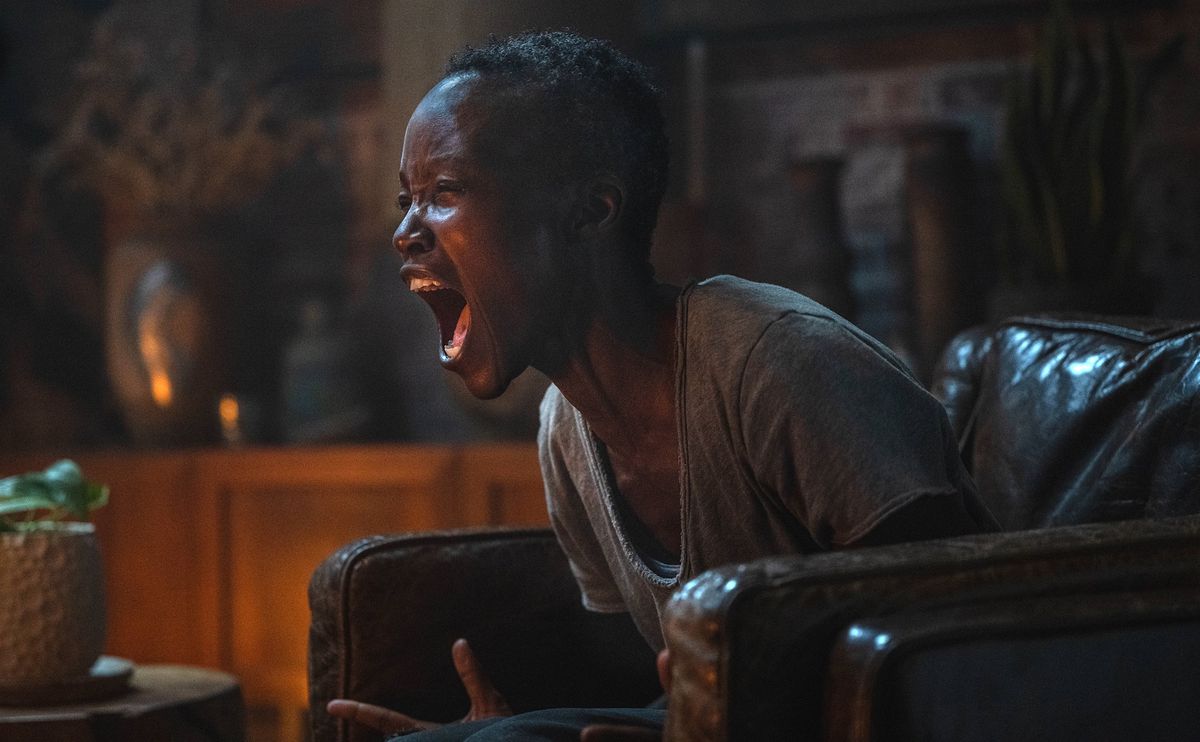A Quiet Place: Day One lives up to the first film by doing something radically different
A quiet place: day one is not so much a spin-off and prequel to John Krasinski’s 2018 horror film, but rather a compelling drama set in the series’ sandbox. You may discover the odd bit of new world-building here and there, about how and why there are so many damn echolocating aliens, but these tidbits are just background noise (shh, not so loud!) to a much more interesting human story. A quiet place And A Quiet Place, Part II are rural sci-fi horror, but Day one – by Pig director Michael Sarnoski — moves the setting to New York City and crafts the story in the style of large-scale disaster movies. It’s probably the best Manhattan chaos movie since Clover fieldand it’s also a downright excellent Hollywood blockbuster, albeit a completely unexpected one.
An aspiring indie filmmaker being brought into the studio system can be a cause for concern – it’s usually a sign that he’s been hired to execute a boardroom vision – but a Quiet place: day one is Sarnoski’s trademark, a genre filmmaker who knows how to find emotional resonances where most wouldn’t go looking. Pigwhat initially seemed like “Johannes Wickbut with a chef and his beloved sow,” turned out to be surprisingly thoughtful in the way the grief was unraveled, a magic trick that also applies to Sarnoski’s horror triptych. Day one is as much about confronting oblivion as it is about confronting aliens, for reasons that aren’t revealed in the film’s seemingly ubiquitous trailers.
When Day one opens, the main character, former poet Sam (Lupita Nyong’o), languishes in a hospice, frustrated by her terminal cancer diagnosis, and looking for a reason to lash out. She only has a few weeks left to live, which makes her an especially intriguing focal point in a film like this. Whether she survives the film is hardly relevant compared to how the experience of living through the end of the world as we know it will change her. The possibilities of the plot are finite, but the emotional possibilities of the film are endless, even within the sci-fi confines of the series.
The beats of the previous Quiet Place films are present, but simplified: giant, insect-like monsters brutally kill anyone who makes noise. Anyone who doesn’t die in the first wave will find out quickly, without burdening the audience with a guessing game where we already know the answers. But the film is set so far into the series’ past — several years before the Quiet place characters find the aliens’ weakness—that there’s virtually no hope for a solution, or for humanity to fight back. At no point are these aliens presented as slasher-movie serial killers, with stealthy one-on-one encounters that humans might win. They function more like a force of nature, an inevitable doom raging through the streets of Manhattan, akin to a relentless hurricane drawn to noise.
Not only is New York the worst possible place to be when this particular apocalypse hits — the film’s opening text claims that the city’s average noise pollution is 90 decibels, the same as a human scream — but it’s also a particularly tricky place to to situate a disaster film in general. As Clover fieldalthough, A quiet place: Day one doesn’t shy away from the horror of 9/11 and the indelible news images that resulted. When the city becomes ground zero for the invasion, Sarnoski immediately envelops the characters in a disorienting cloud of dust.
Photo: Gareth Gatrell/Paramount Pictures via Everett Collection
It turns out that the film is as much about New York as it is about its characters and the show’s central gimmick. Sarnoski treats the city’s neighborhoods and architecture as a separate terrain. (Though he takes liberties with the design of subway stations, New Yorkers will have a lot to say about that.) Ultimately, the film isn’t just about New York’s history; in subtle ways, it’s about people’s personal relationships with a changing urban landscape and the memories it brings. Some spaces, in Day oneare just spaces; they are boring and functional. But some, which have specific meanings, are presented with an ethereal glow.
The spectacle of vehicles being thrown in all directions and famous landmarks damaged beyond repair is a key part of any disaster movie’s appeal. However, Sarnoski gives these traditional visual cues immense emotional weight by focusing on how people would realistically respond to experiencing them. This trajectory seems strangely idiosyncratic at first. When Sam visits the city with her cat, Frodo (an adorable reference — they’re an inseparable pair), on a bus full of fellow patients accompanied by friendly nurse Reuben (Alex Wolff), she’s determined to get her favorite slice of New York pizza. to eat. This remains her goal, even if everything goes to hell.
That may seem like a jab at New Yorkers’ claims of culinary superiority, but the film is on Sam’s wavelength. Her arduous journey from downtown Manhattan to a specific pizzeria in Harlem is quickly portrayed as an emotionally rooted fixation, a response to the immense trauma she faces. If she’s going to die, she wants to do it on her own terms, even if that means rushing headlong toward certain death for a small but familiar comfort.

Photo: Gareth Gatrell/Paramount Pictures via Everett Collection
On her way into town, she encounters an English law student, Eric (Joseph Quinn), who, rather than evacuate, decides to follow her for a reason that seems equally ridiculous. He ends up as the emotional backbone of the film. Sam’s diagnosis had already turned her world upside down: the alien invasion reads like an external manifestation of her spiritual chaos. Eric’s life, on the other hand, followed a linear path, but the experience of almost dying on day one shakes him to his core.
Survival instinct as a broad concept is a sufficient character motif for a disaster film, but Sarnoski anchors this idea in simple but powerfully recognizable stimuli. In Sam’s case, it’s the specificity of memory. (The pizzeria has a deeper meaning than is immediately apparent.) For Eric, it’s the simple act of connecting not with Sam, but with Frodo. Under the circumstances, any of these motives is reason enough to continue, despite the complications that arise.
As is typical of Quiet Place films, the action is built around moments of escape, which clashes with the need to remain absolutely still. Few theatrical experiences can beat the tense realization of this Quiet Place sequences where someone makes a sound unintentionally. But the way Day one frames the human voice is a powerful masterstroke. Between Sam’s intense pain as her meds run out and Eric’s intense trauma from recent events, the characters don’t just have to avoid making sounds while they move. Instead, they have to suppress their nature, their primal need to scream as their lives crumble around them.

Photo: Gareth Gatrell/Paramount Pictures via Everett Collection
The film’s tension remains razor-sharp for long stretches, but it’s also punctuated by sweet moments of release as the characters find isolated ways to relate to one another. Quinn, with his sparse dialogue and countless quiet scenes, exudes a sweet, sympathetic vulnerability that takes him to difficult places as an artist. Nyong’o, though she punctuates Sam with moments of absolute terror, maintains a stern resolve that comes with some deeply moving layers.
Although there is no hint of traditional Hollywood romance between Eric and Sam, A quiet place: Day one is deeply romantic in its depiction of two frightened souls caring for each other, with emotional and physical intimacy born of pure instinct, as the world tilts beyond an abyss from which we know it will not return. In the process, Sarnoski and his leads turn what could easily have been easy personal pursuits into the most important thing each character will ever do.
A quiet place: day one is in theaters now.
